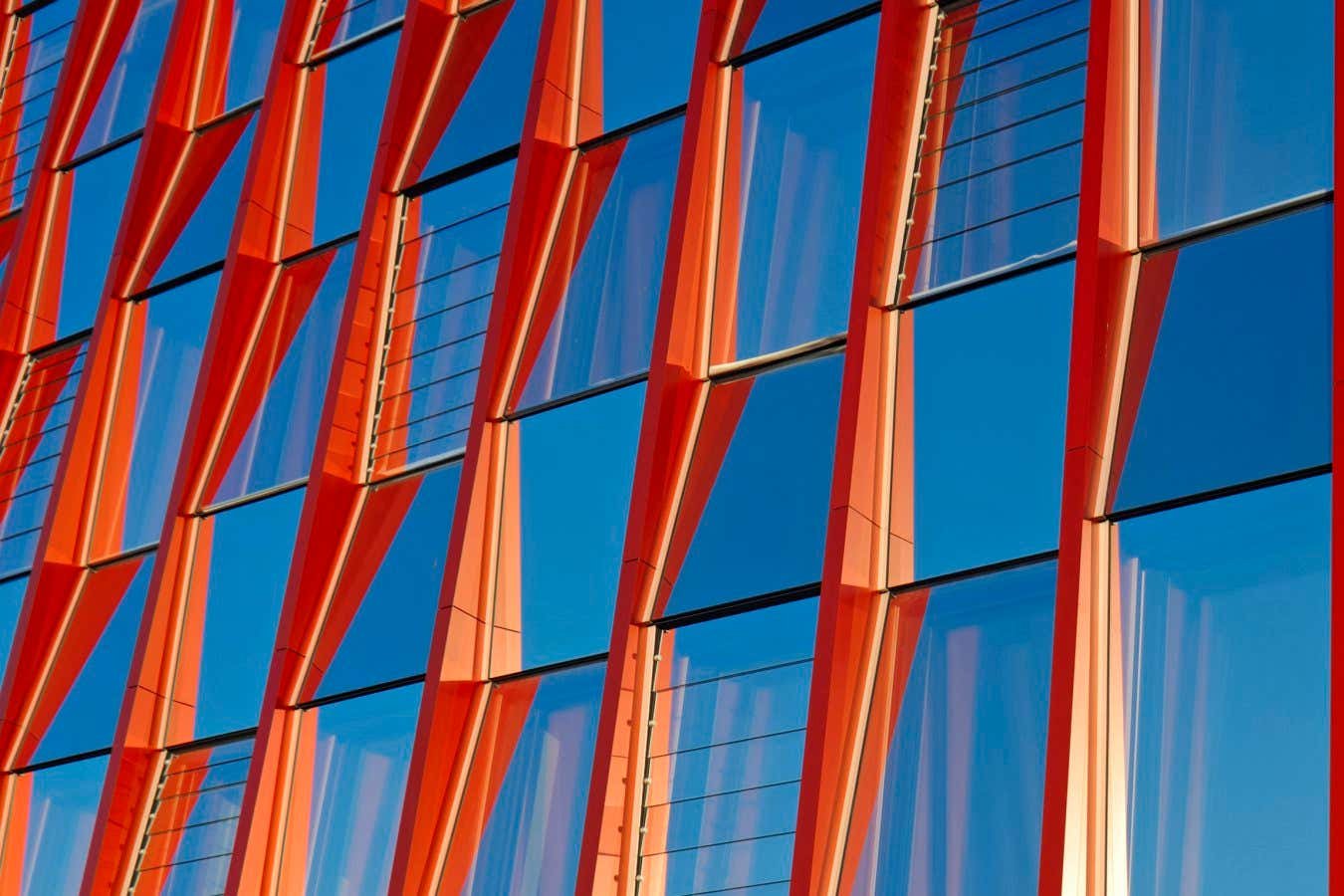
A building’s design can influence its temperature
Alistair Scott/Getty Images
Walls with a protruding zigzag pattern could stay up to 3°C (5.4°F) cooler than regular walls, without using any energy. This approach could reduce the energy used by cooling systems and thus help limit global warming.
“With this kind of design, we can have a cooler building,” says Qilong Cheng at Columbia University in New York. “So we can cut down energy consumption for cooling.”
The use of air conditioning is surging as the world heats up and the number of people who can afford it increases. Greenhouse gas emissions from cooling could more than triple by 2050. As a result, many teams are trying to develop passive cooling solutions that don’t require any energy.
For instance, simply making roofs white so they reflect more sunlight can keep buildings and cities cooler.
This approach is even more effective if roofs are coated with materials that reflect most sunlight but emit infrared radiation within the atmospheric transparency window. This is the range of wavelengths that isn’t absorbed by molecules in the atmosphere such as carbon dioxide.
“Infrared radiation within this band can pass through the atmosphere and reach outer space,” says Cheng.
While materials with these properties have a significant cooling effect on roofs facing upwards, they aren’t as effective on walls. The issue is that materials that are good at emitting infrared are also good at absorbing it, and surfaces near walls, such as concrete pavements, can radiate lots of infrared.
Cheng and his team’s solution is to have walls with a series of protrusions running parallel to the ground with a zigzag shape when viewed from the side. To visualise this, imagine a flight of stairs tilted up from a 45 to a 90 degree angle.
Crucially, the upwards-facing zigs – the treads in the staircase analogy – have a surface that emits lots of heat in the atmospheric transparency window, while the downwards-and-outwards facing zags – the risers – have a surface that reflects infrared heat rather than absorbing it.
To test the idea, the team built a 1-metre-high model with both zigzag and flat surfaces. When put outside in New Jersey during the summer, the zigzag surface was 2°C cooler, on average, over 24 hours than the flat surface, and 3°C cooler between 1pm and 2pm.
There are a number of cheap materials available with the necessary properties, says Cheng. Existing buildings could be retrofitted by adding corrugated panels. The interior cooling effect will vary depending on other factors, such as the size of the building’s windows, but simulations suggest it could be up to 2°C, reducing the energy needed for cooling by up to a quarter.
The zigzag cooling walls would only be suitable for hotter climes as they would increase the need for heating in winter in colder regions. But Cheng and his colleagues have also proposed a design with hinged “fins” that can be raised in winter to increase heat absorption and lowered in summer to minimise this.
Topics:

Felecia Phillips Ollie DD (h.c.) is the inspiring leader and founder of The Equality Network LLC (TEN). With a background in coaching, travel, and a career in news, Felecia brings a unique perspective to promoting diversity and inclusion. Holding a Bachelor’s Degree in English/Communications, she is passionate about creating a more inclusive future. From graduating from Mississippi Valley State University to leading initiatives like the Washington State Department of Ecology’s Equal Employment Opportunity Program, Felecia is dedicated to making a positive impact. Join her journey on our blog as she shares insights and leads the charge for equity through The Equality Network.




